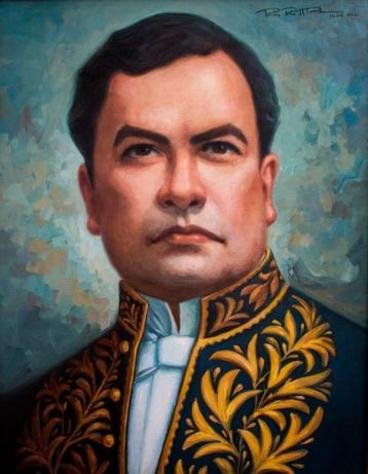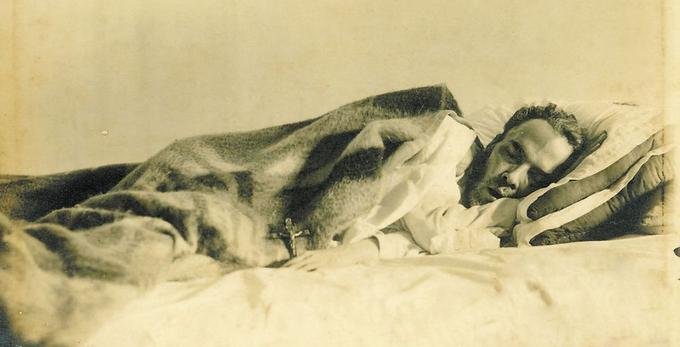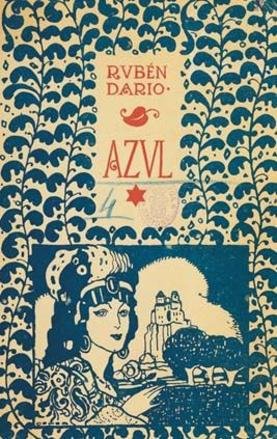
The process of modernization in poetry, which had its epicenter in France with Parnasianism and Symbolism, catalyzed in the Spanish-speaking literature the movement that became known as Modernism, represented by the poet Rubén Darío, who came to renew the poetry in general of Hispanic America and Spain. We will talk about this author and the movement promoted by this post.
Of his life
Rubén Darío is the pseudonym of Félix Rubén García Sarmiento, who was born in Nicaragua in 1867. In addition to being a writer, he was a journalist and a diplomat, both roles that gave him important benefits to his personal condition and as a poet, since through them he was able to travel and reside in different countries, whether as a correspondent for newspapers such as La Nación in Argentina, in the exercise of representing his country or others.
He stood out as a teenager, since he read French poets and was invited to recite poetry, to the extent that he was considered a "child prodigy". He traveled to Chile in 1886 and published his book, Blue... (1888), a work that has been considered the initiator of Spanish-American Modernism. Her travels or residences throughout her life in Spain, the United States, France and Argentina allowed her to get in touch with the advanced intellectuals of the time and contribute to her international reputation. Thus, during her time in the United States she met the Cuban poet José Martí, who renewed poetry in Spanish, and in France her most important influence, the poet Paul Verlaine, and also the young Spanish poet Antonio Machado, who was influenced by her poetry. Although he had had unions with women and had been married, in Madrid in 1900 he met Francisca Sánchez, a person of peasant origin, with whom he had his only surviving son (from the previous unions they had all died from different health causes) and lived until his death.
In 1913, he entered a religious crisis and took refuge in Palma de Mallorca. Stricken by poverty, alcohol and illness, he decided to return to America in 1915, leaving behind the Europe torn by the First World War. He died in Nicaragua in 1916.

Of his work
Let's make an overview of his main books, leaving for another post the characteristics of his poetry and his contributions, as well as the detail in specific poems.
His book Blue..., published in 1888 (and re-edited with enlargement in 1890) is taken as the founding work of the modernist current; however, he had previously written and published other books, as can be seen in the link above.
But it is even more important to point out that its representation of such a renovating tendency is the synthesis of previous processes and productions in Hispanic-American poetry, outlined in the Cuban poets José Martí and Julián del Casal, the Mexican Manuel Gutiérrez Nájera and the Colombian José Asunción Silva; authors who, from particular stylistic characteristics, contributed to the modernisation of poetry written in Spanish.
Like them, Rubén Darío had been nourished by his knowledge of the classics of Spanish literature and had drank from the waters of Romanticism, but in his achievements, the influence of French poetry, first of Parnasianism and then of Symbolism, which we will discuss later, was crucial.
Blue..., apart from the implication of using this adjective that refers to the mallarmean azur, which would already indicate his French empathy, opens up to what will be a fundamental characteristic of his poetry: the sensorial, an aspect to be dealt with later on. It is a book of varied composition, which includes poems in verse and short stories or poems in prose, which also reveals another characteristic element: the coexistence of prose and verse. In this book appears one of his formal contributions to the metric and rhythm of Spanish-language poetry: the incorporation of verse alexandrine, from the French tradition, into the sonnet. Most of his texts will be about love, with an inclination towards eroticism, another relevant character in his poetry.

Then, in 1896, he published two capital books: *Profane Prose and Other Poems and The Rare. In the first one, the nascent poetics of the Spanish-American Modernism is settled, which, in the declarative, Dario gathers in his "Liminary Words", and in his poems both exhibiting his personal conscience of poetry and with the accentuation of aspects included in Blue, both in the use of a variety of different verses, the brightness of eroticism, as well as the display of fantasy and exoticism through cultural references and in the vocabulary. The rare is a book of portraits written in prose where it pays homage to the writers who have attracted and influenced its aesthetic attention, such as Edgar Allan Poe, Paul Verlaine, Lautréamont, Leconte de Lisle and José Martí, among others.
A third milestone in his poetic work is marked by his book Songs of Life and Hope, The Swans and Other Poems, published in 1905, in which Dario emphasizes his conception of poetry ("I am not a poet for the crowds. But I know that I must inevitably go to them", he expresses in the "Preface"), he becomes more reflective and deeper in his vision of life.
Although he later wrote other books, he would finally highlight The Wandering Song, from 1907, where his meditation on the word, poetry in general and his contributions to renewal takes on particular space in his "Dilucidations", a sort of essay that opens the book, and will honour different characters from history and literature.
We'll continue in the next post.
Bibliographical references
Darío, Rubén (1977). *Poetry. Venezuela: Biblioteca Ayacucho.
https://en.wikipedia.org/wiki/Rub%C3%A9n_Dar%C3%ADo
http://rubendario.org/
Written by @josemalavem
Click the coin below to join our Discord Server
)
Although he's not one of my favorites, there's no denying that Rubén Darío is one of the great authors of Spanish-language literature and the father of modernism. His poems are perfect when it comes to making metric analysis and looking for literary figures. Among my favorite poems is Sonatina: "La princesa está triste, qué tendrá la princesa? I look forward to the second part of this series. Thanks for sharing, @josemalaven.
Certainly, for those of us who are inclined to poetry that is neither measured nor rhymed, Rubén Darío will certainly not be a favourite poet. But he is the product of a poetry that was made in compliance with those patterns, and his value lies not only in diversifying it, but even in including the poetic character of prose in the literary environment of the time, which will result in favour of versolibrism and prose poems. Thanks for your comment, @nancybriti.
Excelente trabajo.
Gracias, @oresteg.